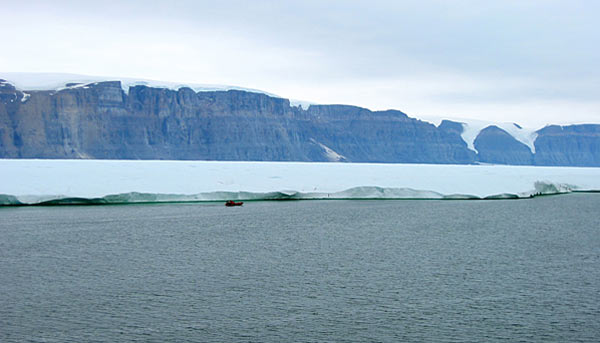
Andreas Muenchow, an oceanographic researcher from the University of Delaware's College of Earth, Ocean, and Environment, reports that an "ice island" four times larger than Manhattan has separated from the Petermann Glacier in Greenland (shown in the photo above from 2009). This "calving" is the largest single ice chunk loss in the Arctic since 1962. Snip from press release:
Greenland glacier calves island 4 times the size of Manhattan, UD scientist reports (udel.edu) A related report in USA Today notes that last month, other scientists on a Greenpeace ship predicted the calving—and that a total of 1.1 trillion tons of ice would soon crumble from the glacier.Satellite imagery of this remote area at 81 degrees N latitude and 61 degrees W longitude, about 620 miles [1,000 km] south of the North Pole, reveals that Petermann Glacier lost about one-quarter of its 43-mile long [70 km] floating ice-shelf. Trudy Wohlleben of the Canadian Ice Service discovered the ice island within hours after NASA's MODIS-Aqua satellite took the data on Aug. 5, at 8:40 UTC (4:40 EDT), Muenchow said. These raw data were downloaded, processed, and analyzed at the University of Delaware in near real-time as part of Muenchow's NSF research.
Petermann Glacier, the parent of the new ice island, is one of the two largest remaining glaciers in Greenland that terminate in floating shelves. The glacier connects the great Greenland ice sheet directly with the ocean.
The new ice island has an area of at least 100 square miles and a thickness up to half the height of the Empire State Building.
“The freshwater stored in this ice island could keep the Delaware or Hudson rivers flowing for more than two years. It could also keep all U.S. public tap water flowing for 120 days,” Muenchow said.

No comments:
Post a Comment